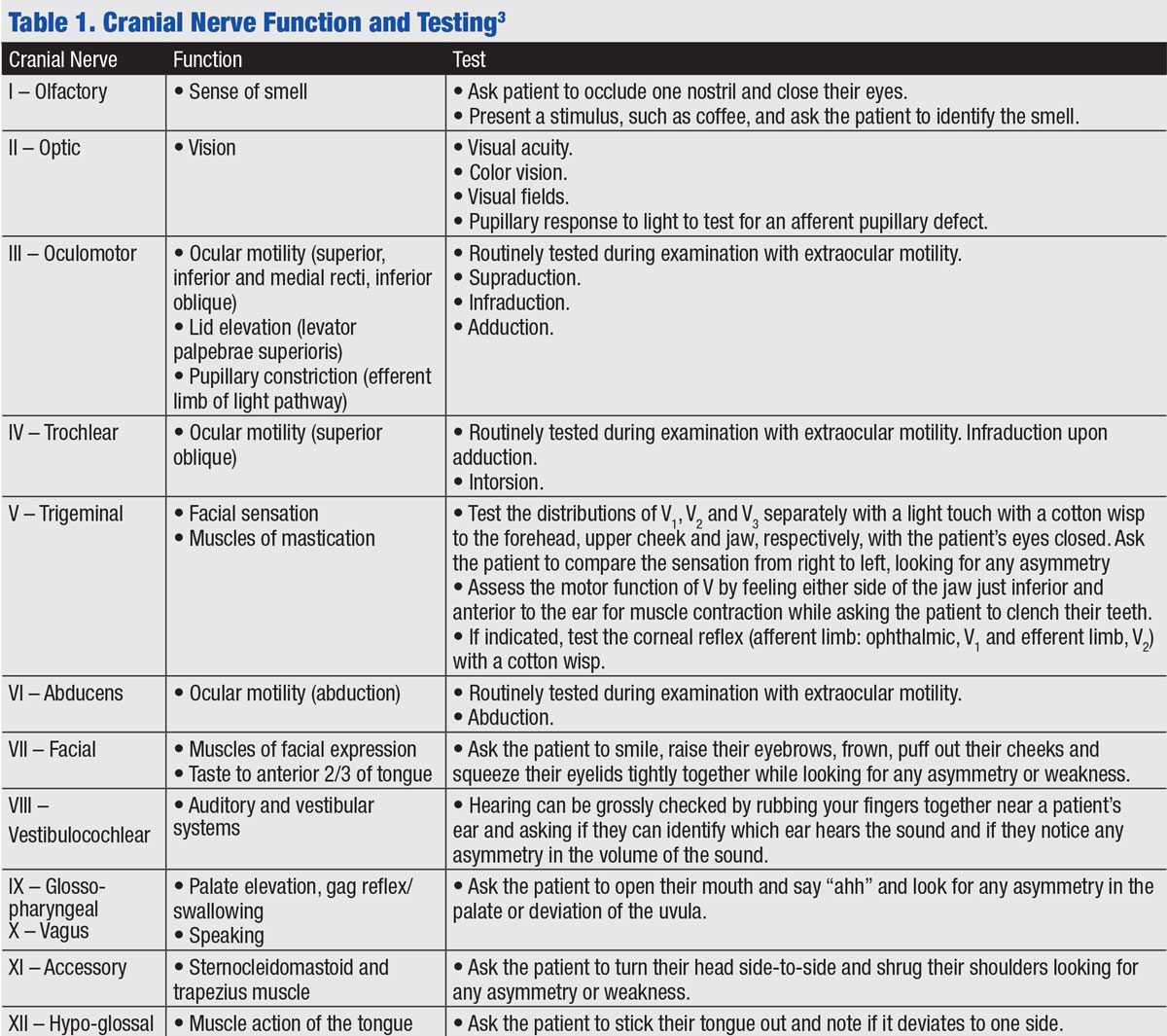 |
| Table 1. Cranial nerve function and testing. Photo: Ashley Kay Maglione, OD, and Kelly Seidler, OD. Click image to enlarge. |
Fourth cranial nerve palsy is the most common disease diagnosed in patients with vertical diplopia. Although it is reported to have a good prognosis, there are currently no prognostic factors that anticipate the recovery of the palsy other than the etiology. The purpose of this study was to investigate the prognostic factors of acquired fourth cranial nerve palsy.
The medical records of 35 patients, including 25 men, diagnosed with acquired unilateral fourth cranial nerve palsy from 2010 to 2020 and followed up for six months were retrospectively reviewed. The cause of palsy was classified as ischemic, traumatic, intracranial mass, other or idiopathic. Patients were divided into two groups according to palsy recovery: complete recovery (group CR) or not CR (group NCR).
CR was achieved in 23 patients, with the most common cause being traumatic, followed by ischemia, intracranial mass, other and idiopathic. The degree of palsy and fundus torsion was significantly higher in the NCR group. Severe oculomotor limitation, large fundus torsion and intracranial mass cause indicated a higher risk of incomplete or no recovery.
CR was 65.7%, which is comparable with previous studies. “The cause of cranial nerve palsy may influence the recovery rate; ischemic cause has better recovery prognosis than others,” the authors noted. A total of 84.6% of the ischemic fourth cranial nerve palsy cases recovered completely, whereas 50% of the traumatic palsy cases recovered completely.
The higher degree of ocular limitation indicated a higher risk of incomplete recovery, which was contrary to a previous study showing the degree of ocular motor restriction was not different between the CR group and partial recovery and persistence group.
“By contrast, superior oblique underaction in our study was more severe in the NCR group, which was a risk factor of incomplete recovery,” the authors explained.
Lastly, previous studies reported the proportion of the correspondence of the excyclotorted eye with the paretic eye, with 64.2% having the correspondence and 35.8% showed excyclotorsion in the contralateral eye. In this study, 74.2% of the patients showed excyclotorsion in the paretic eye, whereas 25.7% showed larger excyclotorsion in the nonparetic eye. “Although it was not statistically significant, seven of eight patients (87.5%) with excyclotorsion in the contralateral eye achieved full recovery, whereas 15 of 26 patients (57.6%) did so with excyclotorsion prominence in the paretic eye,” the authors noted.
Hyun Kim J, Choi HY, Jeon H. Clinical characteristics for predicting recovery of acquired fourth cranial nerve palsy. J Neuroophthalmol. October 22, 2021. [Epub ahead of print]. |


